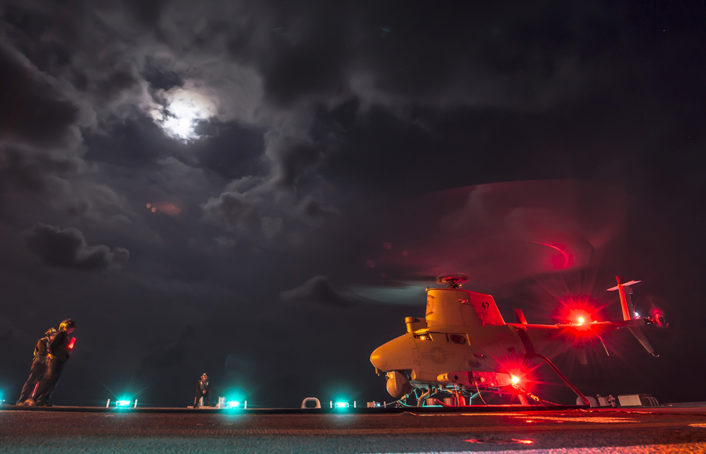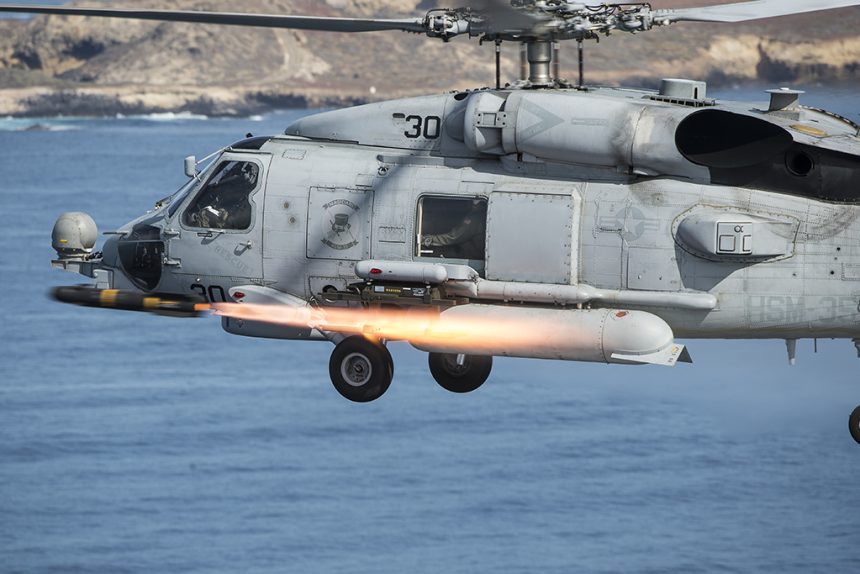U.S. Navy MQ-8B UAS (unmanned air system) was used as a laser designator platform for a MH-60S Seahawk to fire a Hellfire missile.
Helicopter Sea Combat Squadron (HSC) 23 is a Coronado-based expeditionary squadron under Commander, Helicopter Sea Combat Wing Pacific. It is the first squadron to deploy a MH-60S Seahawk and MQ-8B Fire Scout composite detachment aboard Independence class littoral combat ship USS Coronado (LCS 4).
On Sept. 14, an MQ-8B Fire Scout launched from NAS Point Mugu performed “buddy lasing” for an MH-60S helicopter with HSC-23 launched from NAS North Island.
Indeed, during a test, the Fire Scout drone detected a dynamic target, moving at approximately 10-15 knots inside the live-fire range off the coast of Point Mugu and transmitted its location to the MH-60S.
Once all target requirements were met, the Fire Scout lased the target while the MH-60S moved forward and into position to successfully fire an AGM-114N Hellfire missile against the “slow mover.”
“It was awesome to see the MQ-8B and MH-60S tactics and procedures being used in conjunction with each other for the first time,” said Lt. Cdr. Thanh Nguyen, one of the MH-60S pilots who participated in the exercise, in a U.S. Navy release. “We were able to validate the Fire Scout’s ability to find and designate a target, which greatly expands the lethal range of the MH-60S while keeping air crews out of harm’s way.”
The U.S. Navy considers the use of the “hunter-killer” team in future deployments a game-changer as it greatly expands the range and effectiveness of the MH-60S while keeping the helicopter out of harm’s way.
The Fire Scout has been already used in Afghanistan, off Africa (during anti-piracy ops) and during the air war in Libya: one MQ-8B drone copter was shot down during an ISR mission in support of NATO’s Operation Unified Protector.

SOUTH CHINA SEA (May 1, 2015) An MQ-8B Fire Scout unmanned aircraft system from Helicopter Maritime Strike Squadron (HSM) 35 performs ground turns aboard the littoral combat ship USS Fort Worth (LCS 3). Fort Worth is on a 16-month rotational deployment in support of the Indo-Asia-Pacific Rebalance. (U.S. Navy photo by Mass Communication Specialist 2nd Class Conor Minto/Released)
Top image (showing an MH-60R) credit: U.S. Navy
















